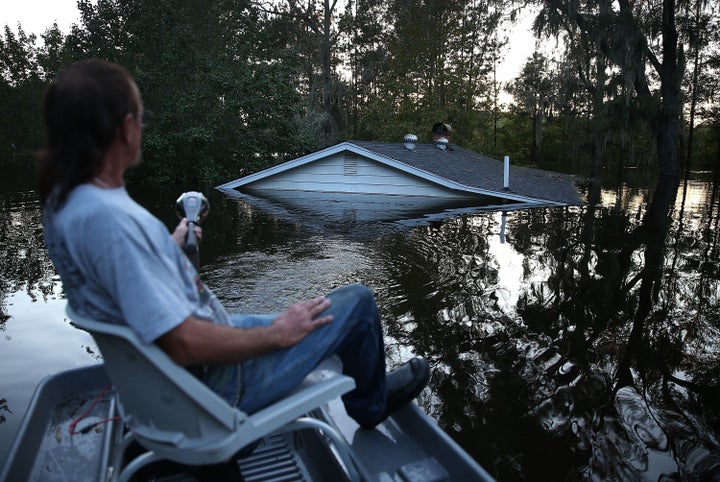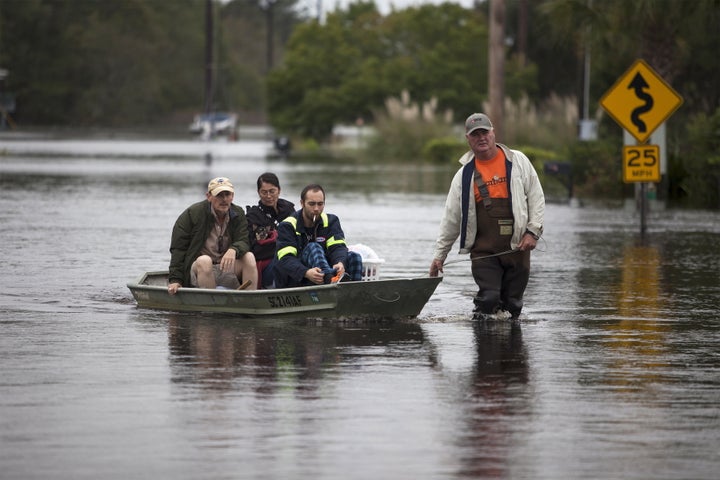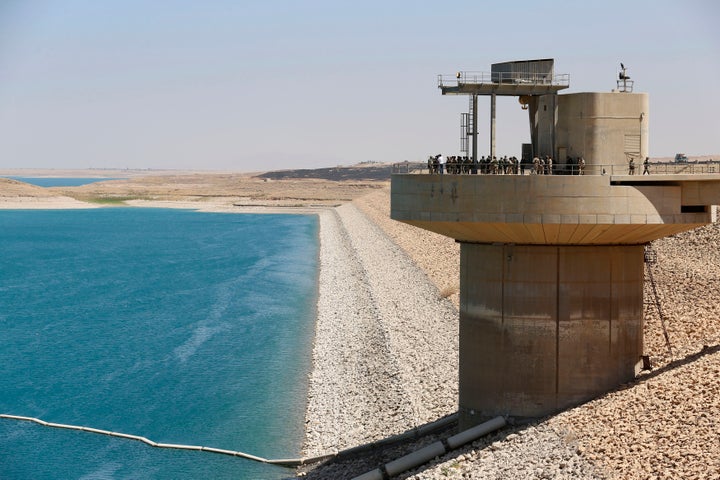
America’s infrastructure is crumbling.
The dams are in particularly rough shape and many have deteriorated -- some to dangerous and potentially deadly degrees. Engineers estimate 70 percent of the country's 87,000 dams will be more than 50 years old by 2020.
If new legislation passes in Congress this month, it would funnel $4.6 billion into water resource projects, including flood management projects carried out by the U.S. Army Corps of Engineers.
But engineers warn it's not enough.
And to fully modernize infrastructure such as roads, bridges and dams, the federal government would need to invest $3.3 trillion in projects within the next decade, according to a report the American Society of Civil Engineers published last week. Planned investment stands at a little more than half that figure, leaving a huge funding gap that could put the brakes on the economy and Americans at risk.
The Water Resources Development Act's proposed funds that Congress is considering would represent a “modest amount of money to help provide some support to help repair some of the publicly owned dams,” according to John France, a dam and hydropower engineer at the consulting firm AECOM. But most are privately owned.
Many aging dams can no longer manage the waters they were built to control because of changes in river flows and weather patterns. Others weren’t designed to protect the dense clusters of homes and businesses that have sprung up around them.
“We have quite a number of dams built across the country originally in rural locations where there was no hazard,” France told The Huffington Post. “But since then, development has happened and people have built houses and roads, and dams that used to be low-hazard dams are now high-hazard dams.” Dams classified as “high-hazard” pose a threat to human life.
Failing to repair and modernize the country’s aging dams leaves Americans and their property at risk, France said.
“Should one of the high-hazard dams fail, and there is a risk of that happening, we could have fatalities,” he added. “It’s a real risk and something those in the dam safety business are concerned about."

The need for good infrastructure was highlighted when much of South Carolina flooded in 2015, resulting in the deaths of 17 people and causing $12 billion in damage to property.
“South Carolina had 20 or 25 dams that failed because of heavy rainfall,” France said. “We were fortunate in that case that those dams happened to be low-hazard dams rather than high-hazard dams.”
High-hazard dams, especially those that are poorly maintained, pose a threat to life and property across the country. But no one actually knows the full risk that old and dilapidated dams create, according to Mark Ogden, a project manager at the Association of State Dam Safety Officials.
“The dam safety community hasn’t really collected a lot of information on the population at risk,” he told HuffPost. It’s something officials are working to correct, he added.
Federal agencies do not own or control most of the country's dams, which means the U.S. government can’t require dam owners to update their facilities. The country’s 49 state dam safety agencies regulate privately owned dams, though Alabama doesn’t have a dam safety agency. The agencies have varying degrees of enforcement power, making it tough to roll out fixes to dams nationwide.
Regulatory challenges aside, repairing the aging dams could cost $54 billion, according to the Association of State Dam Safety Officials. So far, the hefty price tag has slowed efforts to fix failing dams, since state agencies and private owners can’t always afford the cash needed to make improvements, Ogden said.
“If you’re a homeowner’s association, you don’t have that revenue source to raise money to fix the dam.” he added.
Many Americans don’t realize just how sorely U.S. dams need the investment, according to Ogden. “It doesn’t get the attention that a lot of other infrastructure does,” he said. “People turn on their taps everyday but don’t realize that water is coming from a reservoir made by a dam.”

Climate change could put additional strain on the country’s dam infrastructure. Shifting weather patterns threaten to bring heavier rain and more intense storms to some parts of the country. Those changes could push already weak dams to their bursting point. It’s an issue dam safety experts say they’re just beginning to address.
“We’re concerned about climate change,” France said. “But as a profession we really have not yet determined exactly how it’s going to be addressed.”
And the U.S. is not alone in the problem. Dams across the world face similar risks. In the war-torn Iraqi city of Mosul, the country’s largest dam is dangerously close to failing, engineers warn. If it bursts, the dam could unleash a torrent of water 45 feet high and put up to 1.47 million Iraqis at risk. Elsewhere, dams that mining companies erected to contain waste water pose a high risk of collapsing. In 2015, one such sludge-filled dam burst in Brazil, killing 19 people and destroying several villages.
Ogden said officials including those in America's states are doing their best to keep up with the latest science.
“Engineers and hydrologists and meteorologists are making sure we’re up to date with new projections of where flooding might be as a result of the changing climate,” he said.
CORRECTION: This article previously featured a photograph of the Hoover Dam, which, although built more than 50 years ago, was not cited among those in need of repair. The photo has been replaced.

